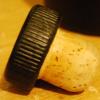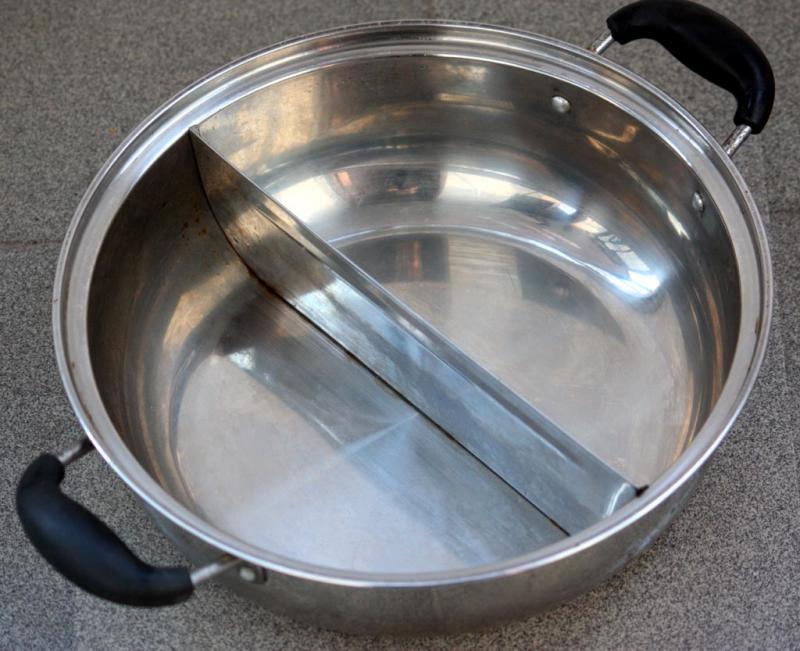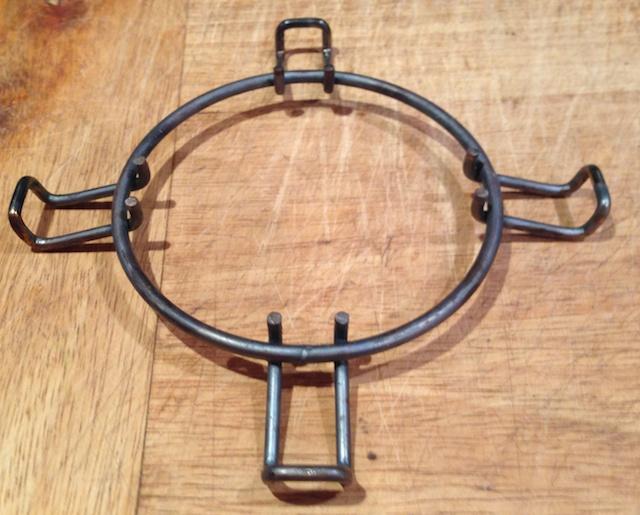Search the Community
Showing results for 'wok'.
Found 5,148 results
-
I thought it was a terrific recipe and the flavor has improved after a couple of days of rest. I prepped the turkey two days before thanksgiving and used Active RM to bind the skin and meat. After removing the tenderloins I dusted them with the Activa and formed a nice little roll that I seasoned with cajun seasoning and cooked at the same time. The breast went pretty much from the circulator to the fryer which was a wok. That's interesting. I made the same for our Thanksgiving. I went basically from the circulator to the wok, and I found that by the time it was fried (about 8 minutes total), that the interior was overcooked. I noticed later that the recipes calls for putting the turchetta into an ice bath for 5 minutes, or running it under cool water for 10 before frying. I don't think this step was emphasized enough, and I was wondering if that was my problem, but it sounds like you did the same as I did and it was just fine.
-
they have been on the market for about 3-4 years. I have had a wok and a crepe-pan for about the same timespan, and I can see no signs of deterioration yet, not in the looks of the pan/coating nor in the non-stick abilities. So no, I haven't ever taken one back. They also give life-long warranty on the enamelled cast-iron, and I know for fact that they are indeed not very difficult about the warranty. I know of at least one skillet that had cracked because of abuse (sitting empty over full heat for about 10 minutes) and was replaced without questions. So I am quite confident that the life-long warranty they promise is indeed being apllied.
-
I thought it was a terrific recipe and the flavor has improved after a couple of days of rest. I prepped the turkey two days before thanksgiving and used Active RM to bind the skin and meat. After removing the tenderloins I dusted them with the Activa and formed a nice little roll that I seasoned with cajun seasoning and cooked at the same time. The breast went pretty much from the circulator to the fryer which was a wok.
-
rotuts: check post 163 in the Cooking for Weigh Loss thread for my version of cauliflower fried rice. I included a brief "how-to".Is that the way you did your friend rice, Ann N? Similarly: Tossed the cauli into a little food processor and pulsed to get it ricish. Fried some bacon pieces until crispy. Made a plain omelette and sliced it up. Fried some onions and some mushrooms in the wok along with some grated ginger. Added the "rice" and tossed it around a bit. Covered the wok for 2-3 minutes just to cook the cauliflower. Added in the sliced omelette and the bacon and some sliced scallions. Seasoned with salt, pepper and a couple of splashes of soy. Dumped into a bowl and drizzled with some sesame oil. Quite yummy and satisfying.
-
Here ya go, Franci: This was sent to me by my friend in Johor Bahru, Malaysia. She and another friend took us over (across the bridge) for the day. As we had been staying with Muslim friends, that day was pork, pork, and more pork: Coffee Flavoured Spare Ribs This dish is both sweet and slightly bitter (because of use of the coffee granules). Choose the spare ribs carefully, select those that are fleshy (also known as the soft bone) and you will get a very meaty and rich and aromatic dish. Ingredients 1. Spare ribs 1 kg, cut into pieces 2. Oyster sauce 1 tablespoon 3. Sugar 1 teaspoon 4. Salt 1 teaspoon 5. Sesame oil 1 teaspoon 6. Egg 1 7. Plain Flour 2 tablespoon 8. Custard powder 1 tablespoon 9. Bicarbonate of soda 1 teaspoon 10. Water 200 ml 11. Corn flour 200 gram 12. Maltose 2 tablespoon 13. Sugar 2 tablespoon 14. Worchestershire sauce 1 tablespoon 15. Instant coffee granules 1 teaspoon 16. Water 100 ml Method 1. Combine ingredients 2 to 11, add ribs and marinate for 3 hours. 2. Heat oil in wok until very hot and deep fry ribs until golden brown. Drain. 3. Mix ingredients 12 to 16 and stir in clean wok for 2 minutes until thicken. 4. Put in fried ribs, mix quickly and serve.
-
A quick breakfast in Guangzhou My first attempt was a good one at this dumpling stand.. Guy had a big wok with a little pool of oil.. He was selling 10 dumplings for 3 or 42 cents, roughly.. They were delicious, i would say along the lines of a prosperity dumpling Next we found this little store front.. They were making pork shumai and these little mini bao tze, filled with juicy pork. This was closer to 8 rmb for the pair. One guy made the shumai, one guys made the bao A good way to s tart the day for sure The buns were my favorite as i have never seen them so little before.. super juicy. here are the shumai close up.. sorry if i am spelling it incorrectly.
-
I use a le Creuset grill pan heated over my wok burner and sear just as I would if I were cooking a raw steak, turning to get cross hatch marks.
-
Problem: cast iron wok, extra hot, burning aromatics and such
takadi replied to a topic in China: Cooking & Baking
If you are going for the screaming hot rocket fueled wok hei, the key is the mise en place...all the ingredients should be precoooked so that when you put all the ingredients in the pan at the same time and just let it go for a few minutes, everything should be cooked perfectly. Velvet the meat, boil/steam/deep-fry the veggies, soak the noodles, and add everything in at the same time. I actually add the meat just a smidge earlier to get an extra sear on it -
Shave them and use them in a salad. Or use it in pork meatballs (really). If you have access to a smoker or can ghetto rig a smoker (wok + al foil + lid + etc trickery) you could smoke them. That's always nice.
-
The gas ones are, I think, largely being replaced by induction cookers as they are cleaner, safer and 'more modern". I spend a lot of time in very rural areas where most cooking is still done on solid fuel (largely self-foraged). A couple of weeks ago I was invited to dinner at a family home. The people are subsistence farmers. They cook over foraged wood and anything else they can find to burn. The hotpot base was prepared this way, but Mama very proudly plugged in her induction cooker at the centre of the table to serve the thing and keep it bubbling - yes, in a flat bottomed wok! Oily mixture? Not what I would call it. See Fuchsia Dunlop's "Land of Plenty: A Treasury of Authentic Sichuan Cooking" (US title) / "Sichuan Cookery" (UK title). Don't buy both as one friend did. They are the same book. Her recipes are spot on the same as I have eaten in Sichuan.over the years.
-
Thank you all for your really helpful replies. Until I get a high BTU burner, I think I'll go for a 14 inch flat bottomed cast iron wok. That was interesting regarding the induction cookers and their use in Hot pot restaurants. I only saw ones with gas burners when I was in Chengdu last year. But I only visited 3 if I remember correctly and they were out in the suburbs. But I'm now digressing. But since hot pot was mentioned, does anybody know how to make the oily mixture you cook the food in? Maybe I should start another thread? In the China forum?
-
Very droll. My wok is 14" (actually 35cm, which is a shade under) as measured at the top. It is the traditional wok shape but 6" (15cm) of the bas has been hammered flat. This is the most common type of wok available these days. In fact, I have just searched Taobao, China's top online shopping portal. All their woks seem to be flat bottomed. The reason is simple. These free standing induction cookers have become widely popular, both in the home and in restaurants. The Taobao descriptions which I read I all point out that they are suitable for induction cookers as well as more traditional gas or solid fuel. They can be set up on the table top and used to cook hotpots or whatever. They are also used in the kitchen. Cleaner and safer than gas. However, they only work if the base is in full contact with the cooker, so a round bottomed wok, no matter how well balanced, simply wouldn't get hot. The circle in the centre is 7" in diameter to cater for my wok's 6" flat section. (Apologies for picture quality. The surface is highly reflective and very difficult to photograph.) I know many restaurants which use induction cookers to serve hotpots. I ate in one just last night. And I don't mean just in one part of China. I've seen them all over. Ten years ago they would have set up individual gas rings on each table, if they weren't already built in. Today, many places use induction, again either by bring a cooker to the table or by having them built in. That is only one kind of hotpot. Many are done in woks, especially at home. Also, I don't see anything corny about calling the one above 'ying-yang'. That is but one transliteration of the Chinese name, 鸳鸯火锅 (Pinyin:yuān yāng huǒ guō).
-
My ex is Korean and we owned a Korean restaurant for about 5 years. She and her mom used carbon steel round bottom woks on our Garland commercial gas range and it was adequate but I was able to visit the kitchens of some Chinese restaurants and their wok stoves were like jet engines. I have no idea how many BTU's they had but I was also a potter who had 75,000 btu burners on my kiln and those wok suckers made mine look wimpy. I had a residential gas stove at home and it didn't put out enough heat to do a stir fry properly. I now have an electric stove and the wok is retired. I suppose I could use it outside nestled in a pile of charcoal but inside is a waste of time. I imagine a cast iron wok would be better able to handle a residential stove because though it would take longer to heat up. it will retain heat better. The carbon steel wok needs constant heat. I use a steel skillet with a copper core for that kind of cooking now days. It is the only pan that approaches the heat to properly do stir fry kind of cooking in a typical U.S. home.
-
FWIW, Grace Young is one of the people who suggested a cast iron wok for those without a high BTU wok burner. I'm no expert....I've never been to China and I will never be going to China. I'm simply trying to do the best that I can with somewhat limited equipment.
-
I don't know if it is the case in the US but home gas ranges here in Australia almost inevitably come with a metal device for the wok burner that holds a round bottomed wok perfectly. It looks like this:
-
I use a 16" round bottom carbon steel wok that I use on an Eastman Big Kahuna propane burner. For indoor use on a gas or electric stove, I use a 12" Peking pan. http://amzn.to/H4JKbE Whatever you buy, get a lid - for fire safety.
-
There's very little room to nest a round bottomed wok on top of the gas rings. Thanks for your replies. not sure what you mean by 'very little room to rest a round bottomed'... the diameter of a wok, whether round or flat bottomed is measured at the topmost diameter. Nearly all domestic use woks on sale in China have flat bottoms these days. Why? To use on gas hobs and free standing induction heaters for hotpots. Round bottomed woks were designed for use with solid fuel stoves which are rarely seen now. I've been struggling to find round bottomed woks for two to three years. In a country as large and diverse as China, it is at best incorrect for anyone to say ' in china' to mean all of china, at worst? well.. If anyone, in China or anywhere else, really want round bottom woks, i know a friend of a friend who wholesales them, minimum 1000 pieces per order, and if you go thru me, my markup is 100% of delivered price. Its cheaper to go on alibaba. In China (ie the parts of China i am most familiar with), round bottomed carbon steel woks on gas stoves are the norm. i have never seen a wok being used for hotpots, because in those parts of China, the pots used in hotpots have a dividing partition in the middle - such that one half is for the fiery hot, spicy stock, and the other half is for the no chilli stock, the yin and yang if you want to be corny about it. I dont find heat retention an issue, wok stir fry, is essentially fast and quick, in minutes and not tens of minutes. One of the essential techniques in wok stir fry is to know when to introduce each of the ingredients separately - no one ever dumps all ingredients all at once, which will definitely cause a significant drop in temperature. Quick heat recovery (conductivity?) and wok stir fry techniques are what its all about. Cast iron is heavy, and another essential technique in stir fry, is actually being able to flip the contents of the wok, making it more like flip fry than stir fry. Unless they have strong arms, I bet most users of cast iron woks just push the contents around, .. and yes they may also turn the ingredients around with the spatula. I could be wrong, but i do not think that chinese restaurants in china or in the ' western' countries use cast iron woks, or flat bottomed woks, or induction cooking tops. I have a 14 inch carbon steel wok (round bottomed) usually cooking for 2, that i have used regularly for the last 10+ years and still going strong with no problems of durability. I also have a 12 inch carbon steel that i have had for more than 15+ years, but i use that less frequently now, as i find that the extra size of the 14 inch makes it easier to flip.
-
"Heat retention" is kind of a confusing term. Not very scientific IMHO. 1. Good heat retention can mean poor conductivity, not a very good quality for a cookware. It means slow heat recovery and uneven heat distribution. 2. Good heat retention can mean high specific heat. It mean it can store a lot of heat. Very good quality for a cookware. For instance, Aluminum is a better heat retention metal than cast iron. Cast iron is a good "heat retention" cookware because it is very heavy. It is heavy because cast iron has to be made thick otherwise it will fall apart. It makes no sense to me to have a light cast iron wok. Why would you want a cookware that can crack and has less heat retention capability? dcarch
-
To throw out a differing opinion, I've used round bottomed woks on electric coil stoves and gas stoves without issue. They're not ultra steady, but they will balance without an issues, and don't require a wok stand. Carbon steel is not fantastic for heat retention but it will get up to heat and return to heat very quickly. Cast iron comes in two flavors - Western and Chinese. the Western ones (such as that Lodge) are EXTREMELY heavy and cumbersome, and not well suited for fast stir fries in my opinion. Chinese cast iron is lighter and better.
-
OK I think I'll go for a 14 inch wok. Trus DiggingDogFarm to introduce a cast-iron work to the discussion. :-) I was going to go for a carbon steel wok. I suppose that would be lighter. How about for cooking purposes ie heat retention? What do you guys think?
-
Unless you have a high BTU wok burner I think that a properly seasoned 14-inch heat-retaining flat-bottomed cast-iron wok that's used on a gas stove works best.
-
A 12" flat bottom wok is what I called a regular skillet. LOL! dcarch
-
Nearly all domestic use woks on sale in China have flat bottoms these days. Why? To use on gas hobs and free standing induction heaters for hotpots. Round bottomed woks were designed for use with solid fuel stoves which are rarely seen now. I've been struggling to find round bottomed woks for two to three years.
-
There's very little room to nest a round bottomed wok on top of th egas rings. Thanks for your replies.
-
I've decided to buy a new wok. I'm going to buy a carbon steel wok but I'm a little unsure about the diameter. The one I've currently got is 12 inches in diameter. I'll be using it on a home gas cooker. I think that 12 inches diameter is a little small. Are there people on here with any views regarding size? I was thinking of 13 and possibly even 14 inches in diameter wiht a flat bottom. Thanks. Edited to add that I've been looking at this: http://www.ebay.co.uk/itm/Carbon-Steel-Wok-33-cm-13-inches-Flat-or-Round-Bottom-in-variation-listing-/131009038650?pt=UK_HomeGarden_Kitchen_Cookware_GL&var=&hash=item1e80bf493a














